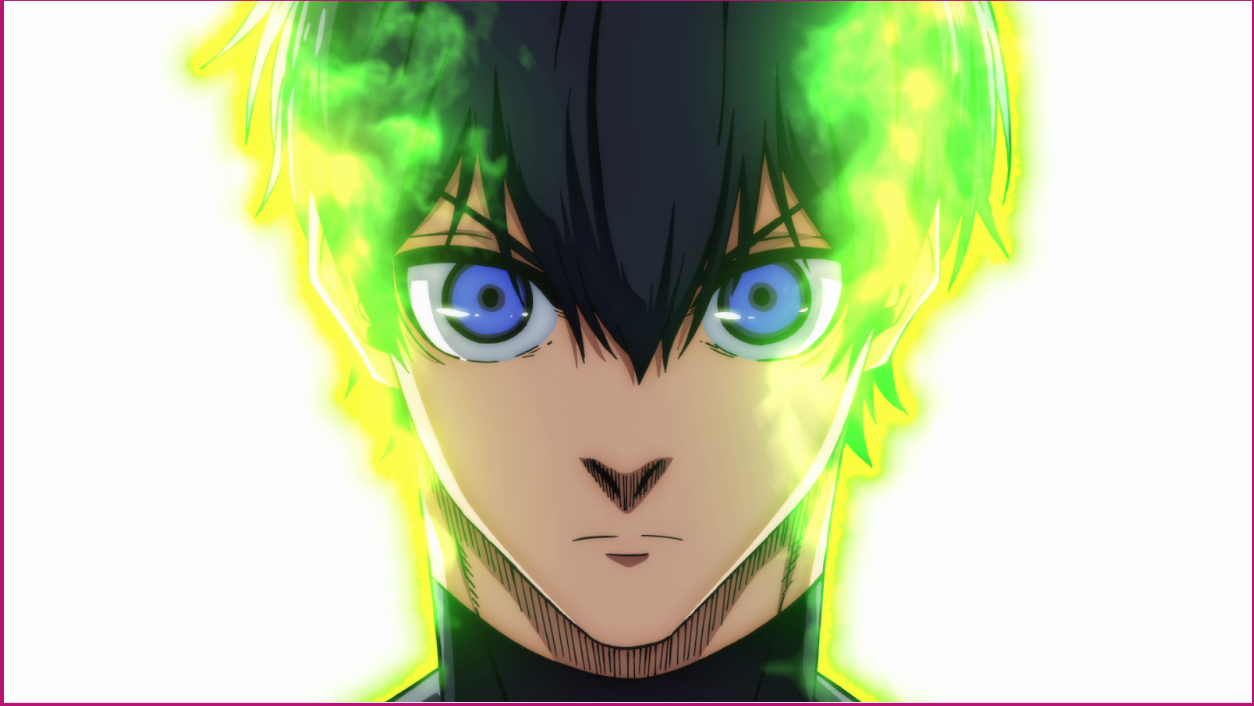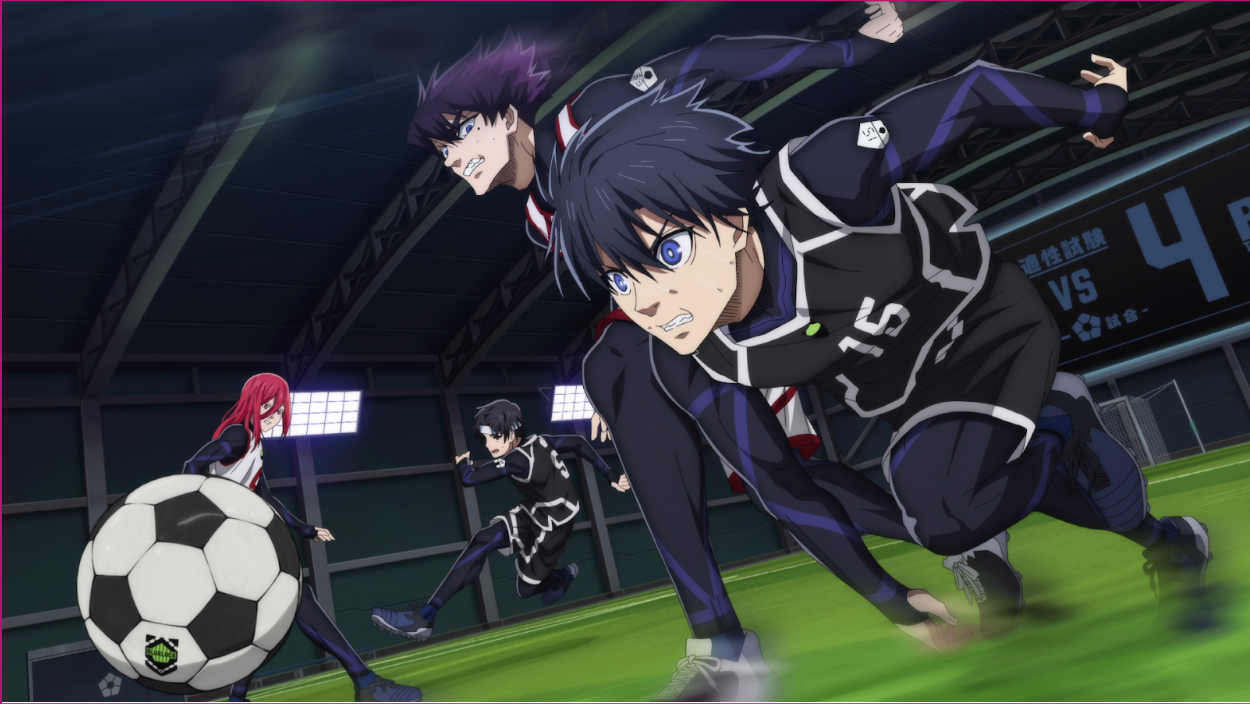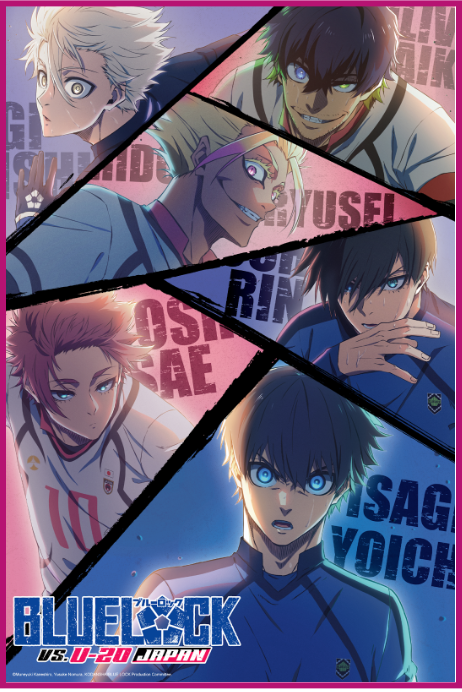How BLUE LOCK Helps Explain Japanese Culture and Why It Hasn’t Produced a Top Striker Yet
Over the past quarter-century, Japanese football has experienced a golden era. Since reaching their first-ever FIFA World Cup in 1998, Japan’s men’s national team have played in each of the last seven editions of the tournament, reaching the Round of 16 in 2002, 2010, 2018, and 2022. However, they have yet to advance to the next frontier and make it to the quarterfinal stage of the World Cup.
Japan’s closest encounter with the elite eight came in Russia in 2018, when they scored two goals after halftime and found themselves cruising to a maiden quarterfinal appearance. However, Jan Vertonghen would pull one back in the 69th minute, whilst Marouane Fellaini equalized for Belgium shortly after. Just when the two sides looked headed for extra time, Nacer Chadli scored in the final second to secure an improbable comeback win for the Red Devils.
In response to their heartbreaking elimination, Japan hired former Sanfrecce Hiroshima manager Hajime Moriyasu in August 2018, who has presided over the national team role ever since. However, in the popular manga series Blue Lock, the Japanese football federation responded in a drastically different manner.
Written by Muneyuki Kaneshiro and illustrated by Yusuke Nomura, Blue Lock has been serialized in Kodansha’s Weekly Shōnen Magazine since August 2018, totaling 32 tankōbon volumes. With over 40 million copies in circulation, Blue Lock is one of the best-selling manga series of all time, and its instant success prompted the creation of an anime television series adaptation. The over-the-top streaming platform Crunchyroll has licensed the series and premiered an English dub on October 22, 2022, eventually releasing the series on two Blu-ray Disc sets on November 14, 2023, and May 28, 2024.
In the anime series, the Japan Football Union hires the enigmatic, mad genius Jinpachi Ego, who is tasked with leading Japan to the elusive World Cup trophy. He concocts the Blue Lock training regimen, an academy designed to create the world’s greatest egotist striker.
Blue Lock begins by introducing the protagonist of the story — Isagi Yoichi. Yoichi’s Ichinan High School team is facing off against Matsukaze High School, with the winner heading to the Nationals, the ultimate youth competition in Japan. Yoichi arrives in the penalty area, but rather than attempt to score the equalizing goal, he decides to pass it to his teammate, who hits the post. Matsukaze breaks on the counter and doubles their lead, securing the victory.
Believing that his footballing career is over, Yoichi is left dejected and despondent, constantly wondering what would have happened had he decided to take on the shot by himself. That is, until he receives a mysterious letter inviting him to participate in the Blue Lock project. Yoichi, as well as the other 300 boys who stumble upon the Blue Lock academy, find themselves forced to unlearn everything they had previously learned about football. Suddenly, the main objective wasn’t to work together as a team and win — but to score the most goals.

As opposed to a regular footballing academy, Blue Lock wasn’t focused on producing goalkeepers, defenders or midfielders — but only strikers. In Ego’s deluded mindset, teamwork and relying on other players were seen as negative qualities. It produces an atmosphere of paranoia and mistrust, with the competitiveness reaching toxic levels. At the end of the competition, only one player will remain standing as the best footballer — the rest will be left in the dust.
We see this manifest early on in the series’ third episode, where five teams face off against each other in a round-robin tournament, with the top two teams being eligible to move forward in the tournament. Seems straight-forward, no? Not quite. Whilst the three losing teams will be kicked out of Blue Lock, the top scorers on each of those teams will advance no matter what. As such, this tournament devolves into unabashed pandemonium.
Soon, the players abandon their pre-selected positions and instead solely focus on finishing the match as their team’s top scorer, constantly demanding the ball. It becomes a free-for-all, and instead of fighting against their opponents to secure the victory, these Japanese adolescents start fighting their teammates to secure the top scorer award on their team. If they won, they’d have a chance of moving on in the tournament and possibly becoming one of the last remaining five players and earn a trip to the U-20 World Cup in six months. If they lost, their dreams of representing the Japanese national team ever again were over.
In order to convince the players to abandon their previous footballing mindset and pursue his unique, dog-eat-dog methodology, Ego utilizes various “real-world” examples. Japan is an international heavyweight in baseball, a sport where each role is clearly defined and where players know how to chip in and do their exact duty without necessarily commanding the spotlight. However, in football, you need more than teamwork: you need individual brilliance and the confidence to take the game by the neck and steal the headlines all by yourself.

He cites the fictional quotes of Manchester United star Eric Cantona — “I don’t care about my team, I just want to stand out” — and Blue Lock character Noel Noa, who beat Lionel Messi and Cristiano Ronaldo to the Ballon d’Or and who would ‘prefer to score a hat-trick and lose 4-3 than win 1-0.’ To him, football is a sport of being better than everyone else and scoring more goals than everyone else.
“What we need is one hero. Messi, Ronaldo, Neymar…football can evolve endlessly if a hero like that exists,” states Ego. “To stop him, new defensive systems are created. To top him, new tactics are born.” According to Ego, the reason why Japan have never won a World Cup (at least at the male level), was due to their over-reliance on teamwork. They needed someone who was going to step up and deliver the goods in the final third.
There is a layer of truth in Ego’s extreme footballing mantra. Whilst Japan have managed to export a host of young players to Europe’s biggest leagues, from Kaoru Mitoma (Brighton) to Takeufsa Kubo (Real Sociedad) to Takehiro Tomiyasu (Arsenal) to Wataru Endo (Liverpool), they haven’t quite managed to produce a world-class center forward. In contrast to other Asian nations like Iran (Mehdi Taremi) or South Korea (Heung-min Son), Japan currently doesn’t have a similar level of attacking talisman who will carry the goal-scoring burden on his shoulders and go for the glory by himself.
Only three players have reached 50 goals for the Japanese national team: Kunishige Kamamoto, who scored 75 goals in 76 caps between 1964 and 1977, and Shinji Okazaki, who scored 50 goals in 119 appearances between 2008 and 2019. There is also Kazuyoshi Miura, who scored 55 goals in 89 appearances between 1990 and 2000 and who, at 57, is still going strong for fourth-tier side Atletico Suzuka and is the oldest active player to play and score in a professional match.

Kamamoto’s 75 goals pale in comparison to other Asian countries’ top all-time scorers, from Iran’s Ali Daei (108) to India’s Sunil Chhetri (94) to Malaysia’s Mokhtar Dahari (89) to the United Arab Emirates’s Ali Mabkhout (85) to Iraq’s Hussein Saeed (78). And it should come as no surprise that the top three scorers in the history of the AFC Asian Cup are from Iran, Qatar, and South Korea. Among the active players in the Japan squad, Takumi Minamino has the most goals with 24 from 65 caps.
This hasn’t come at a cost of their success, but instead helped them grow into a continental powerhouse: their last appearance in a World Cup saw them defeat two former champions in Spain and Germany and finish atop their group, only to lose on penalties to Croatia in the Round of 16. They sit atop their World Cup qualifying group with 16 points from 6 matches, nine more than second-placed Australia, and apart from a 1-1 draw vs. Australia in an October World Cup qualifier, the Samurai Blue have won each of their last eight matches by a scoreline of 32 to 1.
One person who has played a pivotal role in Japan’s emergence on the footballing scene is Tom Byer. The New York native became the first American to play in Asia when he joined J-League side Hitachi in 1986, and whilst he only played one season in the league, he has left a massive imprint on Japanese football. Upon retiring, Tom founded the Japanese company Kix International, an organization focused on youth football training. The rest, as they say, is history: today, Byer’s 150 footballing schools help churn out 20,000 players per year.
Byer’s contributions at the grassroots level helped pave the way for Japan to qualify for their first-ever World Cup in 1997. German sportswear magnate Adidas honored his role by bestowing him with the Golden Boot award — to this day, he is the sole youth football coach to win this award. He’s written four best-selling books, produced five best-selling DVDs, and starred starred in Japan’s #1 children TV program, Oha Suta, presenting the “Tomsan’s Soccer Technics” corner on TV Tokyo’s morning show. He even had a manga character made about himself in Japan’s #1 manga comic book for 13 years: “Tomsan’s, Let’s Try Soccer.”
Over the past three decades, he hasn’t just conducted events in over 2,000 locations and mentored over 500,000 children — he’s changed the way that football is taught in Japan. “If you look at the typical characteristics of a striker who scores a lot of goals, they’re very selfish, authentic and outgoing,” says Byer in an exclusive BTL interview. “They’ve got that killer instinct, they think they’re the best. That goes against the traditional cultural aspects of Japan, where there’s no one player more important than another — it’s all about the team.”
“When you look at the top performers in the world, they have a healthy level of disrespect. The closest we’ve come to developing a player like that is Hidetoshi Nakata and Keisuke Honda, two guys who had the courage to dye their hair blonde during World Cups, who have no filter and say what’s on their mind. We’re not developing that kind of hungry, egocentric type of players here because that goes against everything that’s culturally accepted. They don’t really develop leaders here.”
Hidemasa Morita: The Japanese Midfielder Running the Show at Sporting
“Authentic players are able to control their fear much better. They’re able to play the way that they want. They won’t even listen to the coach’s advice, they want to do what it is their way. The Japanese players won’t do that, they’re the best in the world at following the rules, and you can’t help but think that’s one of the reasons why we’re not producing these players. They don’t want that responsibility of shooting because they might miss and feel ostracized by the whole group for making the selfish decision.”
According to Byer, this mindset is rooted in Japan’s defeat in World War II, when Japan and fellow Axis powers Germany and Italy were defeated by the Allied Powers in a fight between fascism and democracy. From that point on, Japan was living in the shadow of ‘big brother’ USA, focused on churning out people who’d follow and take orders and do their specialized job on the assembly line, as opposed to taking initiative and standing out from the rest.
However, there are certain facets of Japanese culture that have been around for millennia and that have determined behavior customs, such as the principle of “和” or Wa. This was first coined in the year 604 during the writing of Japan’s first constitution: Jushichijo Kenpo. “The Wa, an eminently respectable value, is based on a principle, which is to avoid all discord.”
There are various Japanese proverbs which affirm the value of peaceful unity and conformity within a social group: “The person who’s always quiet is the winner,” or, “When the nail sticks up, you hammer it down.” People who ignore the wa doctrine and pursue their own individual prosperity may run the risk of being reprimanded and hung out to dry by their bosses, colleagues, or even family members, whilst public disagreement in political parties are typically suppressed.
Japanese businesses encourage wa in the workplace, giving employees a career for life in order to foster loyalty with the firm, whilst rewards and bonuses are often handed out to groups as opposed to individuals. Wa prioritizes interdependence, harmony, collectivism, cooperation, patience, teamwork, and conflict-avoidance…in other words, everything that Jinpachi Ego stands against.
“When you look at Western kids playing football, they all want to be the striker,” said Byer. “They all want to shoot, they all think they’re the best…I used to do these massive events for kids. Several hundred kids would come to my events, and I would start off with an icebreaker, asking them to come up in front of everyone and juggle.”
“When you ask American or European kids that, almost all of them will put their hand up. They want to show off, they want to be selected and go to the middle, they want their friends to see them. When you ask the Japanese kids, not a single one would put their hand in the air. Instead, they’d look down at the floor, they wouldn’t even make eye contact, even though all 500 of them can juggle very well. It’s a different culture that’s embedded into the psyche of Japanese people. Unfortunately, leadership is not a quality where Japanese excel, whether it’s business or politics.”
Is Japan’s culture conducive to producing leaders, individual mavericks, and consequently, world-class forwards? Or do these deep-rooted behavior principles like ‘Wa’ impede Japan from manufacturing a superstar striker like Pelé, Lionel Messi or Cristiano Ronaldo? All of these questions are laid to bear in Blue Lock, a manga series that has already expanded into an anime show, a novel, a video game, and a film, and that will enjoy its fourth stage play adaptation this upcoming summer at Tokyo’s Theatre Milano-Za and Higashi-Osaka Cultural Creation Hall Dream House Great Hall.

The first season of BLUE LOCK and BLUE LOCK 2nd Season, as well as the film BLUE LOCK THE MOVIE -EPISODE NAGI-, are all available to stream only on Crunchyroll.
By: Zach Lowy / @ZachLowy
Featured Image: @GabFoligno / Estuo Hara / Getty Images
